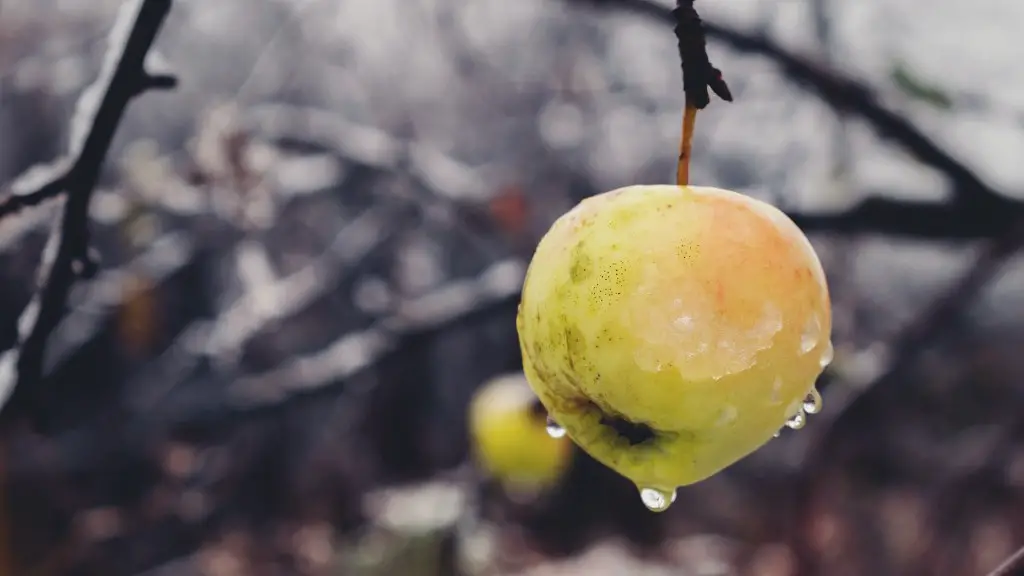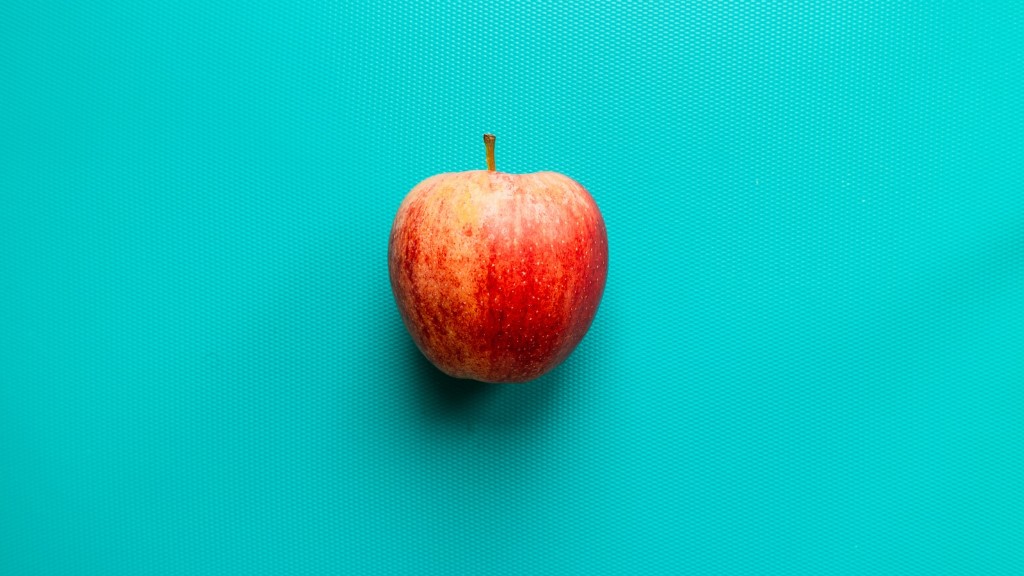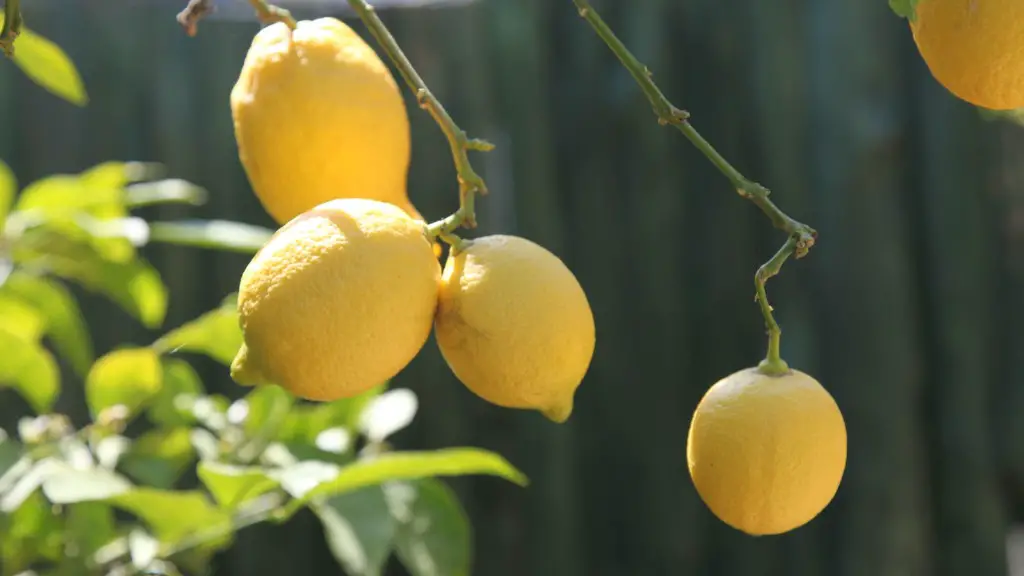Cherry trees are popular as ornamental plants, with their delicate blossoms, attractive foliage and sweetly flavored fruit. Planting a cherry tree from a branch is a great way to get a fully-grown, fruit-bearing cherry tree without all the hassle of buying a sapling and waiting a few years for the tree to mature and fruiting. This article will provide instruction on how to plant a cherry tree from a branch, as well as expand on related topics in further sections.
The easiest way to plant a cherry tree from a branch is to use the air layering process. This involves making a wound in the branch by removing a ring of bark, then keeping the wound wet while it grows some roots and new bark. This process usually takes a few weeks to complete, and can be checked to see if roots have developed regularly.
Once roots have developed, the cut branch should be cut off the mother tree, and can then be planted in soil either in the ground or in a pot. If planting directly in the ground, then the soil should be of good quality and well-draining, ideally in an area of direct sunlight. If planting in a pot, then make sure it is large enough to accommodate the branch, and make sure it can adequately drain.
Initially, it is important that the newly planted branch is watered regularly, but not so much that the soil is overly wet. During the summer months, it is also beneficial to add some liquid fertilizer regularly to help the branch develop. After a few weeks, the branch should be well-established, and should be able to retain its own moisture content, however a regular check should be maintained.
Growing a cherry tree from a branch gives a gardener control over where the tree grows, as well as control over the overall size and shape of the tree. With careful pruning, a gardener can decide how tall the tree should be and how large the overall canopy should be. In the early stages of growth, it is also important to tie the branch up to a stake, or some form of support, to allow it to stand straight during these initial stages.
Naturally, with any form of gardening, there are certain risks and pests to consider when planting a cherry tree from a branch. Pests can range from fungal diseases to rodents, and should be taken into account when planting a cherry tree from a branch. It is beneficial to either grow the tree away from other susceptible plants, or to use a pest-deterrent such as a net over the area.
In conclusion, although growing a cherry tree from a branch is a great way to get a fully-grown cherry tree quickly, there are certain risks and considerations that must be taken into account. This article has outlined the steps necessary when planting a cherry tree from a branch, as well as expanded on related topics to create an informative and engaging piece.
Transplanting an Established Cherry Tree
Transplanting an established cherry tree can be a difficult and labor intensive task, however if done correctly it can be done with a high degree of success. This section focusses on how to transplant an established cherry tree, and includes advice on the necessary steps and safety precautions.
The first step when transplanting an established cherry tree is to choose the right site. When choosing a site, it is important to take into consideration factors such as average sun exposure, soil type and drainage. Trees should be planted in an area which is in direct sunlight, in soil which is well-draining yet simultaneously retains moisture, and away from trees and buildings that may interfere with the tree’s growth.
Once the site is selected, the next step is to perform the actual transplanting. In order to do this, the tree must be carefully and gently dug up, taking care to not damage any roots or branches. To ensure a high rate of success, the root ball should be kept as intact as possible. When digging around the tree it is important to take into account the roots which may be spread out either above or below the surface, as these may be easy to miss when digging.
Once the tree is dug up, it is then ready to be transplanted. Before planting, it is beneficial to trim off any dead or diseased branches, as well as any branches that are crossing over or rubbing, to avoid any further damage or obstruction. Any branches which have been damaged by digging should also be carefully tied together using tape or string to prevent further damage. The tree should then be carefully planted, making sure that the soil is packed properly around the roots, and spending extra time and attention to back-filling any air pockets which could cause disruption to the tree’s ability to fully absorb water and nutrients.
Finally, the tree must be watered regularly, as established trees require a lot of water to become fully established. Feeding should also be undertaken during the establishment period, usually with a slow-release fertilizer, however natural mulches can also be applied for additional organic plant matter.
Pruning an Established Cherry Tree
Pruning an established cherry tree is an important task which should be undertaken regularly. This section outlines the techniques and practices that should be applied when pruning a cherry tree, and provides an interface for readers to learn the details of pruning an established cherry tree.
The first step when pruning an established cherry tree is to examine the overall shape and form of the tree. If a tree is too large or has branches which are crossing or rubbing, then these must be addressed first. Pruning should be carried out conservatively, with only the branches which are causing the most damage being detached.
In addition to removing branches, pruning should also involve thinning out the canopy of a tree, which involves removing smaller branches which are growing too close together. This can reduce the competition for sunlight, which can in turn reduce the amount of disease and pests which can affect a tree. Thinning also helps to create a more aesthetically pleasing shape and form for the tree, whilst still allowing good air circulation.
When pruning a tree it is best to use sharp, clean pruning shears, as this helps to prevent any tearing or ripping of the bark, which can be damaging to a tree. In addition, it is important to never prune the tree too drastically, as this can cause shock which may be damaging to the tree. Pruning should always be performed with care and precision, and only to the extent that is necessary.
Finally, after a tree has been pruned, it is important to apply some form of wound dressing or sealant to the remaining open cuts or branches. This helps to protect the tree from any potential infections which could damage or kill the tree.
Choosing the Right Variety of Cherry Tree
Choosing the right variety of cherry tree can be a difficult task for many gardeners, especially for those who are new to cherry trees. This section outlines how to choose the correct cherry tree for a particular situation, as well as the different types of cherry tree available.
The first step when choosing a cherry tree is to research the individual types and varieties, as there is a vast amount of varieties which range from different fruiting seasons to different types of fruits. It is important to research which varieties will yield the best results depending on the climate in which they are planted.
In addition to researching the individual varieties, it is also important to research which type of cherry tree is most suitable for a particular area. Cherry trees come in both sweet and sour varieties, so it’s important to determine which type of cherry tree is best for a particular situation. Sweet varieties are better for ornamental purposes, whilst sour varieties are ideal for producing fruit. Sour varieties are also significantly more cold-hardy and may be more suitable for cooler climates.
Finally, it is important to select a tree which is disease and disease-resistant. Unfortunately, many cherry varieties are prone to diseases such as Brown Rot, which can be difficult to manage, so selecting a variety which is resistant to this disease is essential, especially if the tree is to be grown in an exposed area.
Methods of Pollination for Cherry Trees
Pollination is an essential step in the lifecycle of a cherry tree, and without it there would be no fruit. This section outlines the methods of pollination which can be used when growing a cherry tree, as well as the important role pollination plays in the growth and development of a cherry tree.
Cherry trees can be either self-pollinating or cross-pollinating, depending on the type of variety. Self-pollinating trees rely solely on the pollination of their own flowers, whilst cross-pollinating trees need to be pollinated from another tree, usually from a tree of the same species. Most varieties which are grown for fruit production are usually cross-pollinating, as self-pollinating varieties usually fruit more sparingly. Cross-pollinating trees also tend to produce higher quality fruit.
When it comes to pollination, there are several pollen sources which can be used, depending on the types of trees being grown and the layout of the garden. For example, some trees may be suitable for having honey-bees or other pollinators such as bumblebees, whilst other trees may need to be hand-pollinated with a brush or small stick. Ultimately, it depends on the varieties and the particular layout of the garden.
In conclusion, pollination is an important step in the growth and development of a cherry tree, and should be undertaken in order for a fruit-bearing yield. This section has delved into the methods of pollination which can be used for cherry trees, as well as outlined the role pollination plays in the growth and development of a cherry tree.




